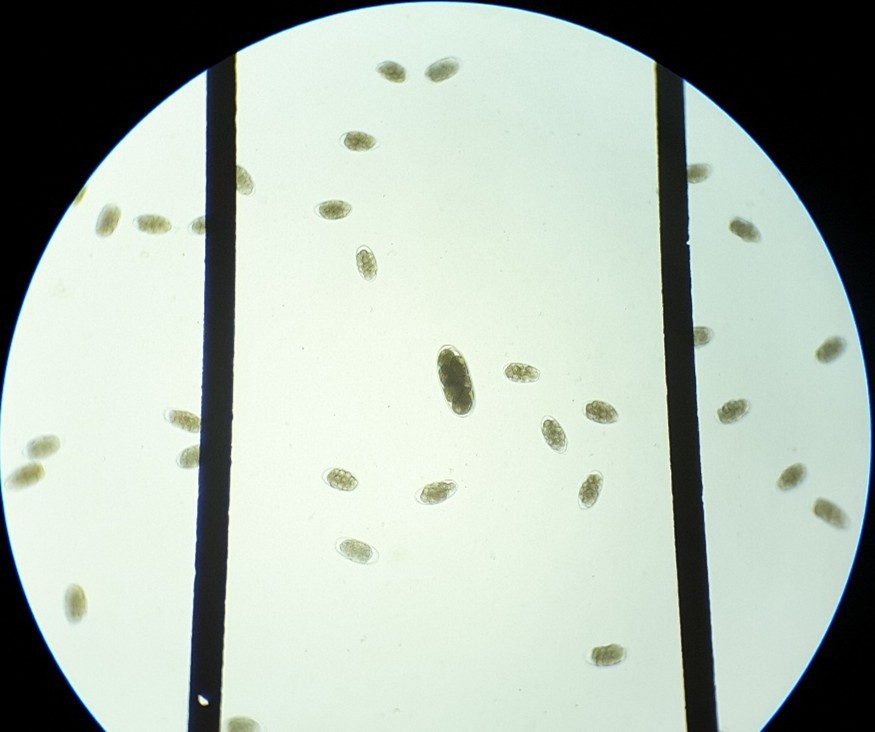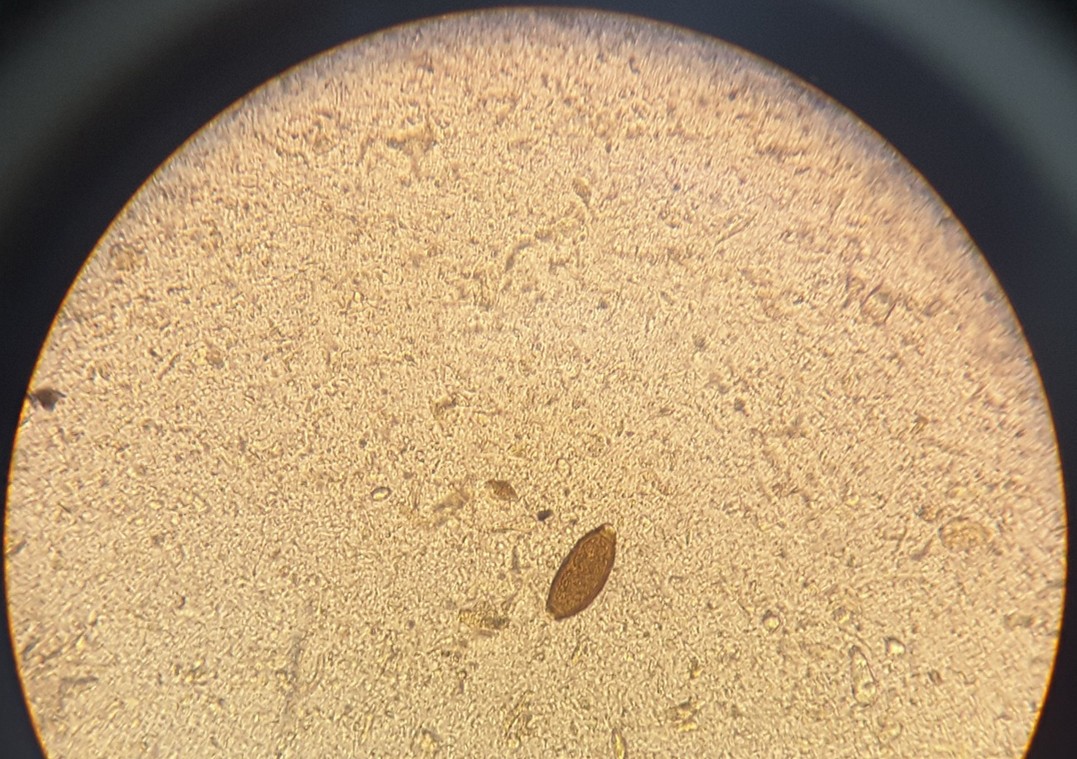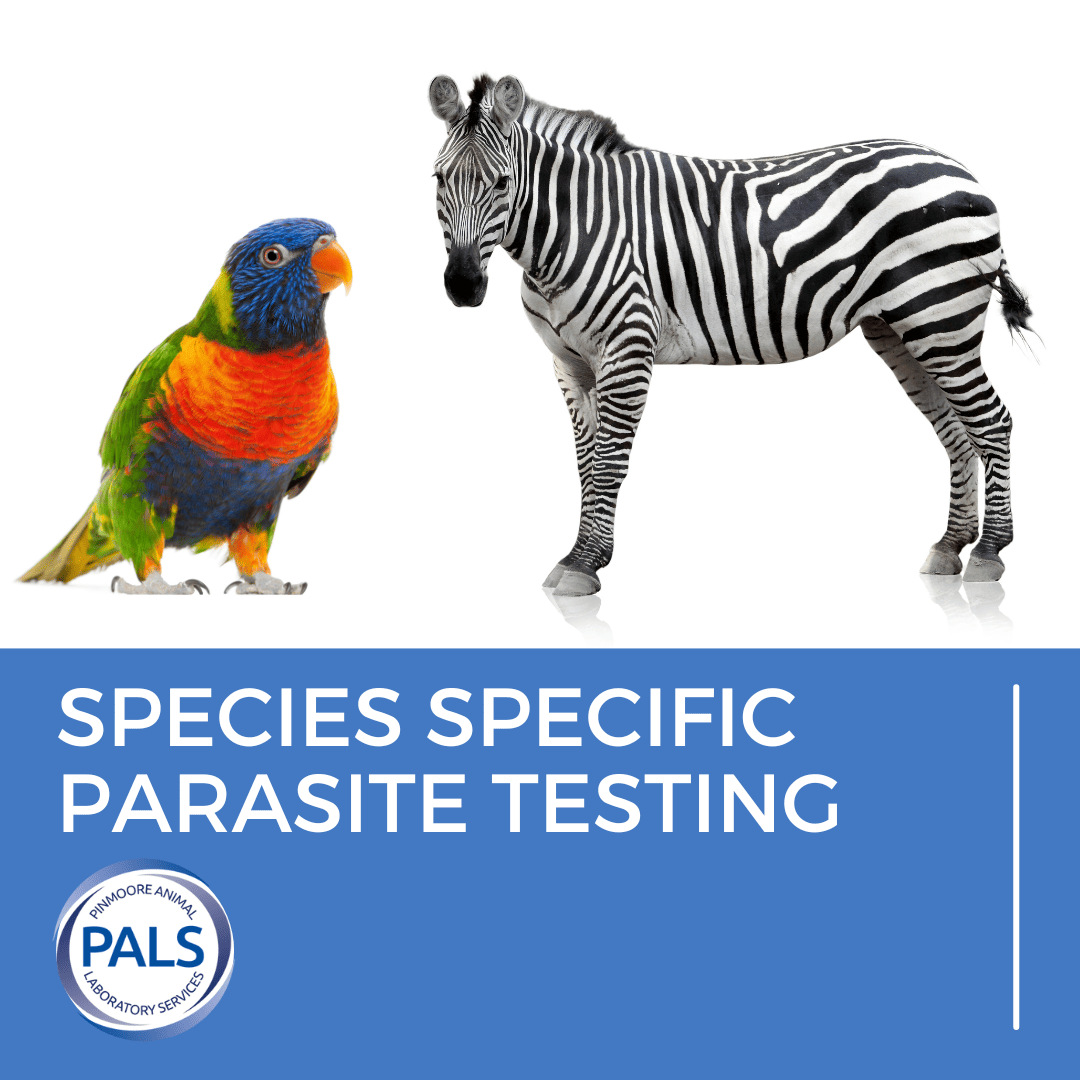Which Technique to use for Faecal Parasites: Sedimentation versus Floatation
Our clients often ask which is the best technique for identifying and quantifying parasites in faecal samples. Simply put, there is no one single method that can effectively identify and quantify all species of parasites from all species of animals. The technique selected for use by our experienced staff at PALS is dependent on the type of animal that the faeces has been collected from, and the species of parasites that cause disease in that type of animal.

(Image: Emma Stanfield, 2025)
For example, a horse with a previously high volume of Strongyle ova PGF (Per Gram of Faeces) would benefit from a simple repeat Worm Egg Count (WEC) to evaluate the effectiveness of the treatment used. A young dog with diarrhoea, however, would benefit from a faecal screen that includes a sediment examination to identify parasites such as Giardia along with the ova of Nematodes, Cestodes and Trematodes. So, what is the difference between a WEC (floatation) test, and a faecal screen (sedimentation) you ask?
Floatation Techniques
Using this method is ideal to evaluate the effectiveness of worming treatments in grazing animals including horses, sheep, goats, cattle, and in other animal species such as rabbits, kangaroos, wallabies and capybaras. The WEC (Worm Egg Count) floatation technique used by PALS is a variation of the Modified McMaster’s technique. This method does not detect all species of ova and is unable to detect Protozoa.

(Image: Emma Stanfield, 2025).
This technique involves a process of straining the faecal sample to remove large pieces of debris and centrifugation of the supernatant before adding a floatation solution. The process enables effective recovery of various ova and oocysts via the combined sedimentation/floatation process. All ova and oocysts which have a lower specific gravity than the floatation solution used (Strongyle species eggs, Coccidia oocysts etc) will float to the top of the solution and are collected for counting in specialised microscopy chambers, enabling the quantification of the ova and oocysts present per gram of faeces.
Down The Microscope: McMaster’s Technique (Floatation Method)

The McMaster’s counting chamber is used to calculate the number of eggs or ova per gram of faeces using the Modified McMaster’s technique
(Image: PALS, 2025).
However, it is important to always send repeat WEC samples to the same laboratory to evaluate the effectiveness of treatment, as different laboratories use different processing methods, which leads to inconsistencies in results when tests are repeated. Floatation techniques have limitations as they are not suitable for the detection of smaller parasites including protozoa such as Trichomonas, Giardia and Entamoeba. Furthermore, this method of analysis has disadvantages when used for other species of animals (Avians & Reptiles etc) as many species of parasite eggs which are found in these animals do not float.
Sedimentation Techniques
PALS uses a two-step formalin-ethyl acetate sedimentation technique which removes larger faecal debris and concentrates all species of parasites (including protozoa) which are present in the sample (via centrifugation). The sediment itself is then examined by our experts using microscopy and various specialist stains, to identify and quantify all parasites within the sample. This technique is always recommended for non-grazing animals, and as an additional test to the WEC for grazing animals.
Down The Microscope: Formalin-ethyl Acetate Technique (Sedimentation Method)

The process of fixing and concentrating the parasites in a faecal sample via Formalin-ethyl acetate centrifugation is useful to identify the ova of parasite species which do not easily rise to the top of a floatation solution (Image: PALS, 2025).
Selecting the most appropriate test
Many of the comprehensive faecal profiles at PALS offer faecal analysis using both floatation and sedimentation techniques, to ensure that the sample is screened for a much wider spectrum of potential pathogens. Faecal screening is especially important in young animals, and for screening pre and post movement of animals.
If you have any further questions regarding selecting the most appropriate faecal testing, please contact a member of our administration team, who would be happy to assist you on 01829 781855 or email: sales@palsvetlab.co.uk
Emma Stanfield BSc (Hons) PGCE (PCET) AMRSB. Microbiology Team Leader at Pinmoore Animal Laboratory Services.

